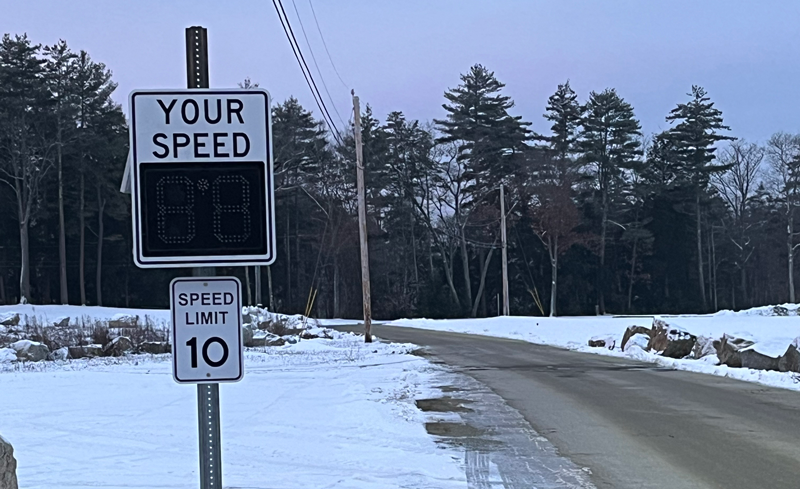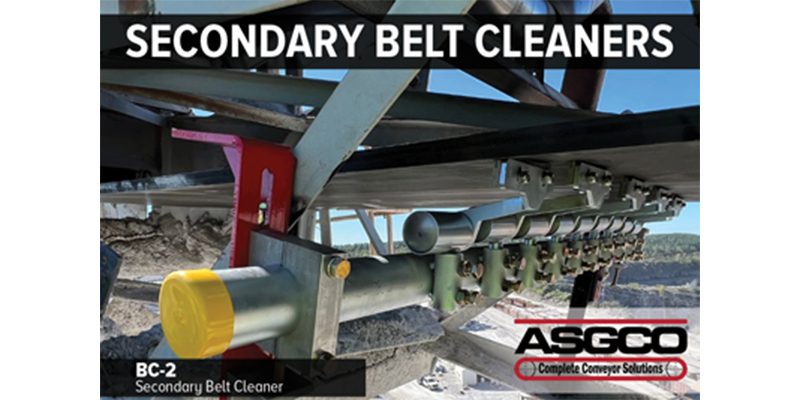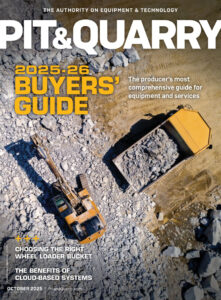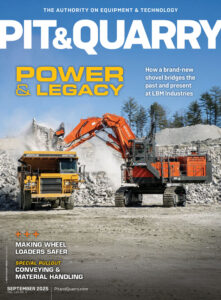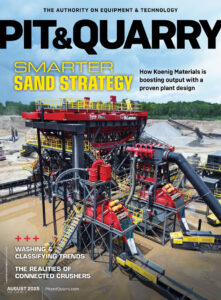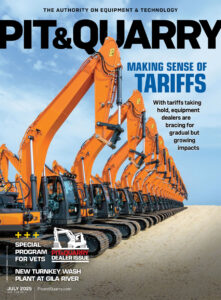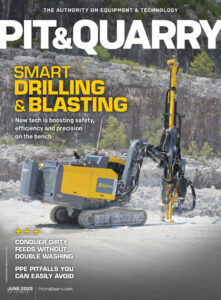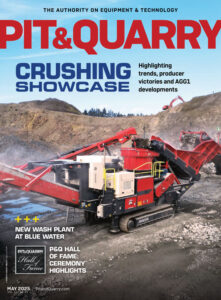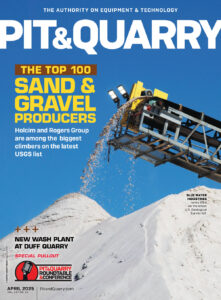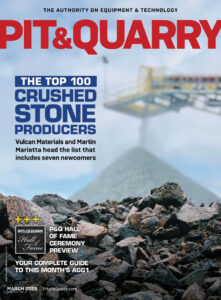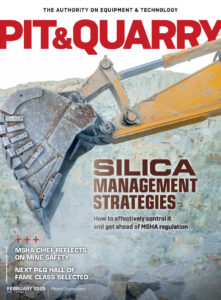
Loaders, pickup trucks, scissor lifts, forklifts, cranes, customer trucks and dump bodies – even trains.
These are some of the pieces of mobile equipment most of us have seen driving through our pits and quarries each day. With all this traffic, we have certainly increased exposure for potential events.
The most fundamental item to help control is a traffic control plan – one that’s customized for your facility. A traffic control plan shows the intended flow of traffic for the site.
This can be featured on a printed handout for customers so they know where piles are and where to go. The most effective traffic control plans use visuals such as signage, maps and photos to help people understand.
A crucial next step is to analyze how you’ll keep pedestrians segregated from all moving vehicles and equipment. In the construction world, this is called an “internal traffic control plan,” although it is commonly referred to as a vehicle pedestrian segregation (VPS) plan when used in pits and quarries.
The goal of a VPS is to identify anticipated travel paths for workers, visitors and contractors, making those as safe as possible. Here are a few elements that are commonly considered in these plans:
Things to consider
• Parking. Where will workers and other visitors park when on-site? Bonus points are awarded if you can eliminate backing in the process (i.e., pull-through parking). Minimizing backing significantly reduces incident risk.
• Walking paths. How do people get from parking areas to the scale house, shops, the plant and other areas? In my travels, I’ve seen some sites put out cones, chains and other visuals to keep people on intended travel paths, keeping them fully separated from site traffic.
• Cell phone area. A great practice is to prohibit cell phone use while people are walking around the site. I’ve seen some sites post “cell phone area” signs in dedicated spots to help with this. Full attention is required when walking around busy sites.
• High-visibility clothing. Many companies I’ve supported require retroreflective traffic vests for employees, particularly when walking around sites. This is a good practice and should be analyzed by site.
I encourage sites to consider at least high-visibility clothing for day operations and strongly consider retroreflective traffic vests if working in low-light conditions.
• Fixed mirrors. While it’s ideal to not need mirrors, visibility is sometimes impacted by items we cannot move. Adding mirrors and signage can help.
• Signage. Think about the last time you went to the airport. Remember the signage to the parking areas? Remember the signage to get to your airline, then to security and then your gate?
Airports have done a great job making this very visible and easy to follow. Apply the same logic to your site.
Do you have the right traffic signs? Do you have speed limit signs?
■ Eye Contact. This is a very simple one: Communicate to your teams that they should never assume someone operating a piece of equipment or vehicle can see them.
Many vehicles and pieces of mobile equipment have blind spots. It’s important to ensure the pedestrian makes eye contact with the operator before walking near moving equipment.
Food for thought
These are the fundamental elements to consider when creating or reviewing your site’s VPS plan.
Still, for these plans to be effective, they must be communicated appropriately. Some of the sites I’ve visited do this well. They communicate at least annually to their employees and their anticipated contractors.
I have also seen a few sites incorporate their plans into a customer appreciation week, when they hand out traffic control plans and swag to customers.
One of the most unforgiving hazards on our sites is moving equipment. Keeping people separate from this hazard should be a fundamental goal for any pit and quarry.
If you have an example of a best practice with VPS, send me a photo. I’ll share some of your tips in upcoming articles.
Previous column: Educating quarry workers on ergonomics
Steve Fuller has worked over the past 20-plus years with a variety of industries – including aggregates – in operational and safety leadership roles. Now representing Steve Fuller Company, he can be reached at steve@stevefullercompany.com.

